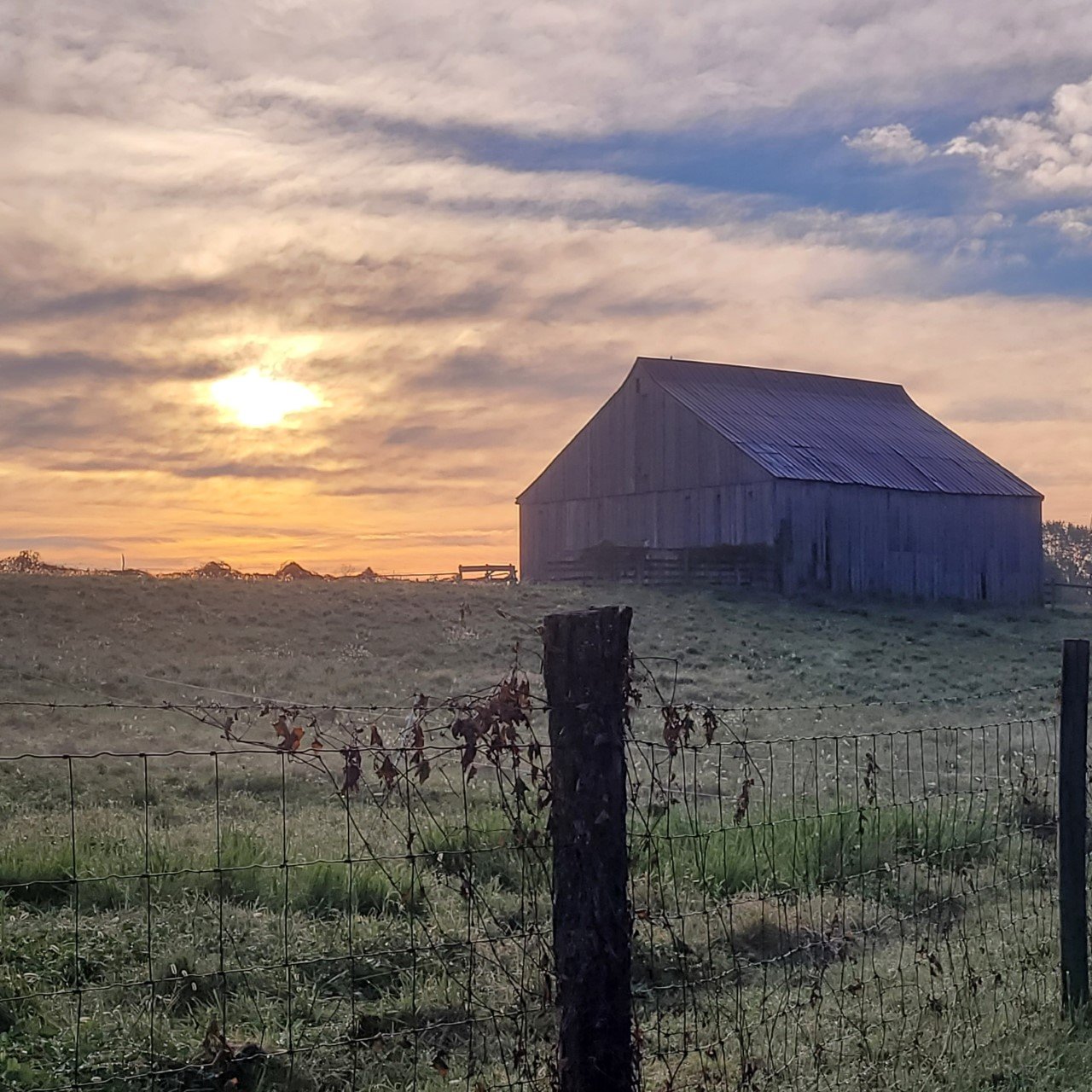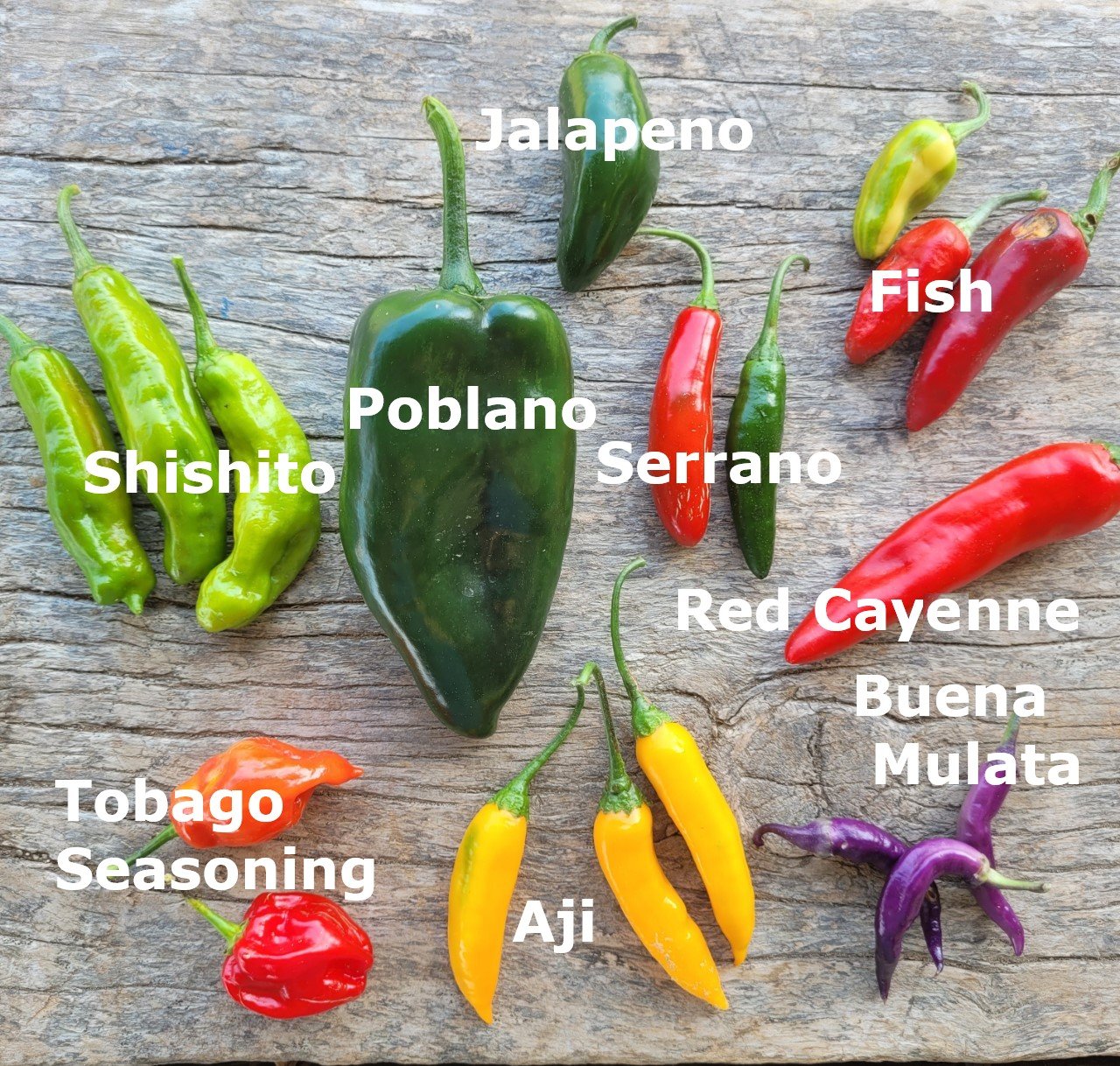Early morning sunrise by the sheep barn
| This Week’s Share │ Announcements │ U-Pick │ Recipe │ Coming Soon │
This Week’s Share
Garlic Heads
Winter Squash
Fresh Ginger
Radishes
Spicy Mix/Tatsoi/Tokyo Bekana
Chilis/Mild peppers
Sweet/Bell Peppers/Eggplant
Keep track of your share’s for the season! The page is easy to view from a larger screen, the names will be listed by First name with the Last initial. Please let us know if you need help finding yourself!
Please try to do this at home if possible, while we are happy to look up in a pinch, doing this for everyone at sign-in proves a bit tricky
Announcements:
Only 5 weeks remain!
We are enjoying the weather this past week, while brisk, it has remained clear and allowed all the fields and our boots to dry out fully.
As we start getting our fields cleaned up from a bountiful summer’s harvest, we will be starting to incorporate cover crop into the last of the fields being used this year. Planting the cover crop before it gets too cold is vital to creating nice green cover for the soil over the winter. It will also give a wonderful addition of organic matter to the soil when it is reincorporated next Spring.
And believe it or not we are already getting ourselves together to plant the first crop for the 2023 season, GARLIC!!!
We have been making our way through the loft above the barn, that was filled to the brim of garlic, to find the perfect heads to use for seed in next year’s crop. Over the next few weeks we will all start being a bit more Garlic focused getting the field prepped and all of those cloves separated individually to be planted.
Cooking Webinar Tonight at 7pm
The Chesapeake Bay and watershed harbors a habitat unique to the East Coast of the United States. This environment has impacted and inspired local foods and recipes throughout generations. Join Library CEO Mary and Chef John as they take a tour from Hilary Harp Falk, CEO of the Chesapeake Bay Foundation, at the headquarters in Annapolis. From there, our hosts will travel to CBF’s Clagett Farm: a farm that explores and exemplifies farming practices that can be truly sustainable, both economically and environmentally. Back in the kitchen, Chef John, Mary and Hilary will whip up dishes inspired by the natural beauty of the Chesapeake that nourish our bodies.
Chesapeake Farm & Bay to Table is a partnership between Harford County Public Library and Our Common Table.
Bulk Beef
We will be opening up sales this Friday, October 14
More info will be on it’s way, and just so you get all the first meat updates throughout the year, even when our CSA ends, join our meat mailing list.
U-Pick:
All Items may be picked Monday-Saturday 8am-8pm
Chiles
Located in Field G2, will be fading quickly with the cold weather!
Shishito- Mild peppers they also ripen to red- 1 and 10 can be a bit spicy
Poblano- Mild Peppers
Tobago Seasoning Habanero- Sweet, fruity and rather mild
Jalapeno- Hot and grassy flavor
Aji Amarillo- Hot and a bit fruity
Serrano- Hot and similar to that classic jalapeno but 3-5 times hotter
Fish- Range from hot to spicy/cross between serrano and cayenne for taste
Red Ember Cayenne- Flavorful, but rather spicy similar to serrano
Buena Mulata Cayenne -will also ripen to red, the unripe purple will be rather spicy with a grassy flavor and as it ripens it becomes more fruity and smoky.
Located in herb garden-
Sage
Onion/Garlic Chives
Cutting Celery
Recipes:
Mustard Greens Soup with Almonds
Cook Time:
Serves: 4-6
This soup really celebrates the flavor of spicy mustard greens—and, as a bonus, it's vegan. (You may decide to make it the first time for someone who’s vegan, then find yourself turning to it over and over when there are no vegans at the table—it’s that good). It’s made creamy with potato and enriched with the wonderful flavor of toasted almond.
Ingredients
2/3 cup (about 3 ounces) blanched (peeled) almonds (I always keep the slivered ones on hand, but you can use whole ones as well), plus a few extra for garnish if you wish
Salt
2 medium fresh poblano chiles
2 medium (about 1/2 pound total) boiling potatoes (the red- or white-skin variety or the multi-purpose Yukon gold, which are typically larger), not peeled, but cut into ½-inch cubes
4 garlic cloves, peeled
1 bunch (about 8 ounces) mustard greens, tough stems cut off
3 cups vegetable stock or water, plus a little more if needed
Directions
Heat your oven to 325 degrees, spread the almonds onto a baking sheet, slide them into the oven and toast them until nutty-smelling and pale golden, about 15 minutes.
While the almonds are toasting, roast the poblanos over an open flame or close under a preheated broiler, turning regularly until blistered and blackened all over, about 5 minutes for the open flame, 10 minutes for the broiler. Place the chilis in a bowl, cover with a kitchen towel and cool until handleably. Rub the blackened skin off the chilis and pull out the stems and seed pods. Briefly rinse the chilis to remove bits of skin and seeds.
While you’re waiting for the poblanos to cool, bring a large (4-quart) saucepan of heavily salted water to a boil over medium high. Scrape the toasted almonds into it, boil for about 5 minutes until noticeably softened, then use a slotted spoon to scoop them into a blender jar. Add the potatoes and garlic to the pot and cook until the potatoes are fork-tender, about 6 minutes.
When the potatoes are ready, use a slotted spoon to scoop out the potatoes and garlic into a bowl. Pick out the garlic cloves and add them to the blender, along with half of the potatoes. Add about two-thirds of the mustard green leaves to the pot and cook for 1 minute, just until they soften and turn even brighter green. Use tongs or a slotted spoon to transfer the greens to a blender jar. Add one of the poblanos (torn into smaller pieces), the vegetable stock (or water) and the toasted almonds. Process until completely smooth—with a high-powered blender, this should take about 2 minutes; typical blenders will take longer. Pour the blanching water out of the pot, then pour in the soup.
Chop the remaining poblano into ¼-inch pieces and add to the soup along with the other half of the potatoes. (You can reserve a tablespoon or two of poblano for garnish if you want.) Slice the remaining mustard green leaves into ½-inch pieces and add to the soup. When the soup has simmered for a minute or two—the mustard greens need to soften to a pleasant tenderness—season with salt, usually about 1½ teaspoons. If the soup seems a little thicker than you’d like, thin it with a little extra vegetable stock or water. Divide the soup among warm bowls and top each with a few pieces of poblano (and chopped toasted almond if you made extra).
Riffs on Mustard Greens Soup: You can replace the mustard greens with spinach, chard, kale or collard greens or wild greens like nettles and lamb’s quarters. If this soup is the main dish of your meal, you may want to add cubes of tofu or coarse shreds of cooked chicken just before serving. Poaching shrimp in the soup makes it very special.
Sourced from Frontera.com
COMING SOON:
For the rest of the CSA we will keep seeing the greens pour in and each week we are seeing some size up quite nicely to use for the sauté pans and into soups. We will also be letting some keep going and form into nice heads of greens.
For example the Tokyo Bekana, you have been seeing for a few weeks as a salad greens similar to lettuce. We will let quite a few plants keep growing to their full potential, a lovely Chinese cabbage head. While this variety is typically is grown for its nice cut greens, we have found it doesn’t limit itself to excelling in just one department.
Sweet Potatoes are the last big star awaiting it’s big debut! We usually expect to hand these out during the last couple of weeks. For now, let just be grateful they have some more growing potential before the chilling frost comes by for it’s first long visit to the farm.
-The Clagett Crew
Thank you for Supporting our Farm!
CLAGETT FARM
Wednesdays, 3:00-6:30 P.M.
Saturdays, 1:00-4:00 P.M.
ANNAPOLIS
Thursdays, 4:00-6:00 P.M.





